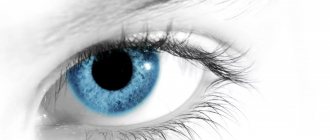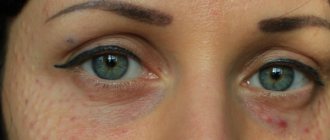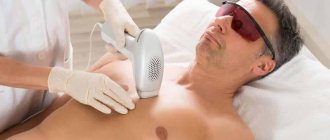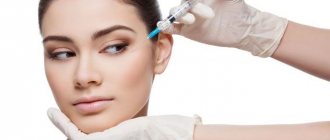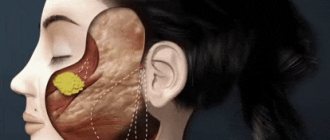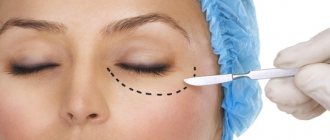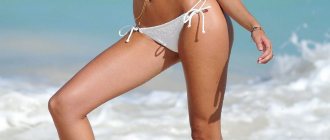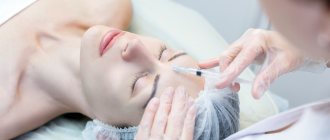Dermal radio wave optical thermolysis (DROT) is a cosmetic procedure that has a rejuvenating effect. The second name is laser resurfacing, which is also correct: the skin is exposed to a laser, the beam penetrates to a depth of 5 mm and cleanses even the deep layers of the dermis. The DROT procedure is the shortest and most gentle of all known, but very effective.
The essence of the DROT procedure
Dermal radio wave optical thermolysis is a double effect on the skin of the face and body. Polishing is carried out with a radiofrequency pulse and laser; the specialist can choose the appropriate mode of operation of the device and have a positive effect on different layers of the skin. The result will be:
- removal of already keratinized, exfoliated particles of the epidermis - this occurs under the influence of a fractional laser;
- rapid production of natural collagen by body cells, caused by radio radiation.
The DROT procedure provides a lasting rejuvenation effect, the skin becomes elastic, toned, its natural color and full health return.
We recommend reading about chin mesotherapy. You will learn about the essence of the procedure, indications for use and contraindications, mesotherapy drugs, as well as the recovery period and alternative methods. Read more about canthoplasty here.
Laser rejuvenation CO2 DOT
1. The presence of a function that controls the depth of vaporization in the skin.
2. Technologies that allow you to simultaneously smooth out wrinkles, remove pigment, even out skin texture and color.
3. Eliminating the risk of scars after the procedure due to exclusive pulse shape algorithms.
4. Minimum rehabilitation period.
SmartXide Touch (CO2 laser) is an innovative development in the field of anti-aging technologies!
Dermal Optical Thermolysis, abbreviated as “DOT” and with the “RF” function called “DROT”, is a true revolution in the field of rejuvenation.
A beam of laser microbeams enters the tissue in “columns” to a clearly defined depth. The resulting neocollaginesis triggers the mechanisms of synthesis of protein fibers (elastin and collagen).
This improves the properties of the skin, it becomes firm, dense and elastic. The treated area is quickly restored.
Thus, the tissues in the treatment areas are regenerated, and areas of the skin without laser exposure are not injured.
This rejuvenating technique helps to minimize tissue trauma and, accordingly, avoid a long rehabilitation period.
The tissues heal in 3-4 days - much faster than with other anti-aging procedures that are similar in effectiveness.
To carry out the manipulation, the patient does not have to take a vacation and give up his usual lifestyle, which, of course, is very convenient and is one of the most important advantages of the procedure.
| Service code | Name of procedure | price, rub. |
| Laser rejuvenation (CO2 DOT) | ||
| A22.01.002.001.001 | Laser rejuvenation (face) | 14400 |
| A22.01.002.001.002 | Laser rejuvenation (neck) | 10000 |
| A22.01.002.001.003 | Laser rejuvenation (neckline) | 12000 |
| A22.01.002.001.004 | Laser rejuvenation (hands) | 12000 |
| A22.01.002.001.005 | Laser rejuvenation (face + neck) | 23000 |
| A22.01.002.001.006 | Laser rejuvenation (face + neck + décolleté) | 27000 |
The effect of the CO2 laser rejuvenation procedure - READ MORE...
The effect of CO2 laser rejuvenation procedure
Dermal optical thermolysis (laser rejuvenation) helps achieve the following results:
- the skin of the face, hands, décolleté, neck and other areas is rejuvenated and tightened;
- “crow’s feet” are smoothed out - wrinkles in the rather delicate and sensitive area around the eyes;
- hyperpigmentation disappears in various areas;
- various types of scars caused by surgical interventions, tissue trauma after burns, cuts, etc. smooth out, become less noticeable or practically disappear;
- stretch marks become less pronounced, light stretch marks disappear;
- It is possible to correct scars and post-acne marks.
Advantages of the rejuvenating technique using CO2 - READ MORE...
Advantages of the rejuvenating technique using CO2
Let us highlight the main advantages of the procedure:
- the rehabilitation period is insignificant and takes, on average, no longer than a week;
- During the procedure, tissues are practically not traumatized;
- the anesthetic is applied superficially, without injections, which numbs the procedure;
- the effect of laser rejuvenation is pronounced and lasting;
- the likelihood of complications and side effects is reduced to zero;
- The procedure is sterile and non-contact.
How many procedures are required to achieve results with CO2? — READ MORE...
How many procedures are required to achieve results with CO2?
The duration of the procedure and their number are determined by the area of the area to be treated, as well as the problems that need to be overcome. One procedure usually takes 5-30 minutes. The number of procedures is determined in accordance with the patient’s age, the nature of the problems and the condition of the tissues. On average, 2 procedures are required.
After the CO2 laser rejuvenation procedure - READ MORE...
After the CO2 laser rejuvenation procedure
After the manipulation, a natural tissue reaction to microtrauma appears - slight redness and swelling that persists for 3-4 days. The skin may peel; this symptom accompanies the patient for a week and does not require any action. Peeling goes away on its own.
After the procedure, the patient must refrain from active tanning and use a sun protector with a sufficient SPF factor, as well as baths, saunas and solariums, so that age spots do not appear.
The use of makeup cosmetics is allowed the very next day after the procedure, provided that there is no inflammation in the areas where the products are applied.
Contraindications for dermal optical thermolysis (CO2 laser rejuvenation) - READ MORE...
Contraindications for dermal optical thermolysis (CO2 laser rejuvenation)
The dermal optical thermolysis procedure, as mentioned above, is considered quite safe and effective. Thanks to unique developments, skin trauma is minimized, the procedure is absolutely sterile and does not cause complications. However, like any cosmetic procedure, it has certain contraindications:
- oncological diseases;
- herpetic infection in the acute stage;
- inflammatory processes in the skin in the active phase;
- autoimmune diseases;
- violation of the integrity of the skin in the treated areas.
Reviews about CO2 DOT laser rejuvenation
I went for a laser rejuvenation procedure 2 years ago. It was called DOT, I think. I was concerned about pigmentation, dull and somewhat gray skin color and its general aging. I really liked the result. The recovery took almost a week, but it was worth it.
I completed a course of 2 procedures with a break of six months. At first, after the first procedure, I thought that I would never dare again! It was painful and the next day my face was all swollen and red, but the doctor was in touch, told me everything and reassured me. Indeed, by the evening of the third day almost everything had passed. The effect was excellent. No chemical peels can do this. The main thing is that everything is sterile, without inflammation and herpes.
I came for a facial cleansing, but after collecting a full medical history, the doctor said that only laser resurfacing would really help heal the skin. I had terrible pigmentation, wrinkles and sagging skin. Pseudoblepharoplasty was promised as a bonus. The procedure is painful, but you can endure it. I took a week off and thought it wouldn’t be enough. It turned out that if all rehabilitation rules are followed, after 3-4 days there are almost no traces, and the result is visible immediately. The upper eyelid lifted especially noticeably and the eyes “opened”.
In my youth I suffered from severe inflammatory processes on the skin of my face. Post-acne scars remain. They suggested doing some kind of injections, but as an alternative, the cosmetologist recommended laser resurfacing. I needed 3 procedures over a year and a half. The result exceeded all expectations. The miracle CO2 laser from Italian DEKA gave me back my confidence and beauty.
Indications for use
The implementation of dermal radio wave optical thermolysis will be effective not only for existing signs of skin aging, for example: reduced firmness and elasticity, facial wrinkles. Indications for the DROT procedure are:
- rosacea – intense vascular network on the skin;
- intense pigmentation that occurs due to age-related changes or heredity;
- enlarged skin pores as a result of excessive oiliness of the dermis;
- problems on the skin around the eyes – dark circles, bags, drooping eyelids;
- stretch marks on the skin that occur after sudden weight loss or pregnancy;
- scars on the skin of various types.
Depending on what served as the purpose for carrying out dermal radio wave optical thermolysis, the specialist will determine the duration of each session, the number of procedures, and the area of influence by the device.
Contraindications
There are a number of diseases for which laser resurfacing is strictly contraindicated:
- lupus erythematosus, psoriasis and other systemic connective tissue pathologies;
- persistently elevated blood pressure - hypertension;
- diabetes mellitus of any type;
- neoplasms in the body from malignant cells.
Conditional contraindications include periods of pregnancy and breastfeeding, acute viral infections. This means that the DROT procedure can be performed later, after the body has recovered and the doctor’s permission has been obtained.
The recovery period may vary. For example, after childbirth, dermal radio wave optical thermolysis is allowed only after 18 months, but after a viral infection, the procedure can be performed as early as 2 weeks after recovery.
The cosmetologist must be notified that the patient has a history of diseases of the circulatory system . Some of them are a contraindication to laser resurfacing, others require a gentle effect on the skin.
If you plan to carry out a rejuvenating procedure during the period of active sun (summer, early autumn, late spring), then the doctor will advise you to refuse the sessions and postpone them to a later time.
How is the procedure performed?
A DROT session lasts from several to 30 minutes, it is painless, and can be safely performed without anesthesia or anesthesia. In addition, an allergic reaction is excluded. If a person has a high pain threshold, anesthetic ointment is sufficient.
Most often, the course includes 4-6 procedures, once every 3-4 weeks. The number of sessions is determined taking into account the degree of the patient’s problem; it is determined by the cosmetologist during the examination.
The effect of the technique and its advantages
After the DOT session you can see that:
— the skin of the face, neck and décolleté is noticeably renewed, wrinkles become less deep, and fine lines disappear.
— the lifting effect is pronounced, especially in the area of the lower and upper eyelids.
— the skin became firm, elastic, smooth, the color evened out, and enlarged pores shrank.
- pigmentation and spider veins, post-acne scars and postpartum stretch marks have become less noticeable or have completely disappeared.
After radio-optical thermolysis, a very short rehabilitation period is needed. Peeling, swelling, and redness may occur on the skin; all this goes away in 4-5 days.
The technology has a number of advantages:
- minimal possibility of pigmentation and scarring of the treated skin.
- thermal and mechanical damage to the skin is excluded.
- the effect on the body is gentle and controlled.
- there is no overheating or burns, and all thanks to this. That the intensity of the effect can be adjusted taking into account the characteristics of the body.
How is dermal radio wave optical thermolysis done?
The duration of one DROT procedure is a maximum of 30 minutes, but a more precise time will be determined by a specialist . This is done taking into account the existing problems on the patient’s skin, their severity and duration of presence. As a rule, one DROT procedure lasts several minutes, much less than half an hour.
Scheme of operation of laser grinding DROT
Laser resurfacing is painless; patients are not given anesthesia. If there is a low pain threshold, or a person needs a DROT procedure, but his skin is too sensitive, then before the start of the session, a special gel with an anesthetic (anesthetic) effect is applied to the desired areas of the body or face.
To obtain a sustainable rejuvenation result, 4–6 sessions are required, they are carried out with a break of 7–20 days. The number of impacts and the frequency of their implementation are determined individually. The first positive results will be noticeable within 5 - 7 days after the first session.
But experts do not recommend stopping the prescribed course of procedures, because only in this case can you count on maintaining the anti-aging effect for a year or more.
Watch the video about removing stretch marks on the body using the DROT procedure:
The peculiarity of dermal radio wave optical thermolysis is a short rehabilitation period. After just 5 days, redness, peeling and swelling disappear - natural consequences of any anti-aging cosmetic procedure.
Consequences and contraindications to dermal optical thermolysis
Contraindications:
- oncological neoplasms;
- period of pregnancy and lactation;
- diabetes;
- viral infection;
- exacerbation of chronic diseases;
- stable high blood pressure;
- diabetes;
- epilepsy;
- some pathologies of the circulatory system.
As with any method of rejuvenating the face and body, in this case there are mild side effects. This may include swelling, itching, pain and redness. Peeling and burning are very rarely observed. As a rule, such consequences arise due to the individual characteristics of the body, and therefore are rare.
Advantages of the method
DOT rejuvenation has a number of advantages over other methods. For comparison, you can take a popular procedure: mesotherapy, in which special meso-cocktails are injected under the skin.
| Subject for comparison | Dermal optical thermolysis | Mesotherapy |
| Method of influence | Non-invasive (no instruments penetrating the skin) | Invasive |
| Pain syndrome during the procedure | Unpleasant sensations (requires anesthesia cream) | Unpleasant sensations during injection |
| Number of procedures to achieve the best result | From 3 to 6 procedures | Course of 5 procedures |
| Consequences | Rarely occur | There may be bruises at the injection sites |
| Risk of skin damage | Absent | Present |
| Rejuvenation result | The effect “accumulates” after a course of procedures and lasts up to 7 years. | After a course of procedures - within a month. |
| Security level | Safely | There are some risks |
Step-by-step description of the procedure
Laser peeling does not require special preparation before and after the procedure, so therapy is carried out at a time convenient for the patient. A doctor's consultation is required, as there are contraindications. Directly at the clinic, the face is thoroughly cleaned of makeup using special products, after which an anesthetic gel is applied with gentle movements. The optimal exposure time for the anesthetic is about 30 minutes.
Next, the doctor adjusts the device based on the characteristics of the skin and the needs of the patient. Then, using a fractional laser, problem areas are treated with laser beams. The duration of treatment depends on the size of the treated area and complexity. It does not exceed 30-40 minutes.
Individual consultation
Efficiency level
Modern cosmetology includes a huge number of rejuvenation methods. This could be certain procedures in a salon or hardware in a clinic. The safest, most effective and fastest-acting is DOT. Because the effect becomes noticeable after 1 procedure. At the same time, the skin is tightened, pores are narrowed, and wrinkles are smoothed out. If you make about 3-5 of them (depending on the problems), you can achieve amazing results. Durability of the effect: several years.
Photos before and after dermal optical thermolysis. a course of 4 fractional laser procedures and 3 Plasmolifting procedures.
Rehabilitation period
The skin of the human body is very delicate, so any impact on it causes discomfort. As a result, rehabilitation is necessary after dermal optical thermolysis. The recovery period takes very little time: from 3 to 5/7 days. These days you need to apply a special anti-inflammatory gel (Bepanten) three times, and then a regular moisturizing cream. In summer, be sure to use sunscreen.
Useful recommendations after the procedure:
- the first week you cannot take a hot bath or visit a sauna;
- give up the pool too;
- You can play sports after 7 days;
- sunbathing is contraindicated;
- control the skin care process. It must be of high quality and constant.
Possible complications
Dermal radio wave optical thermolysis is a delicate cosmetic procedure for skin rejuvenation. No unpleasant consequences or complications are noted after its implementation, but only if DROT is carried out in a beauty salon or clinic, by a specialist and in compliance with all the rules. After laser resurfacing, the following may appear:
- pronounced redness of the treated areas of the skin;
- intense peeling of the skin;
- swelling in the affected areas.
Severe redness of the treated areas of the skin.
This is considered normal and should not cause concern - by 3 - 5 days the skin condition will normalize. To speed up the restoration of appearance, you can treat the dermis with anti-inflammatory gel three times a day, after 3 days it is changed to a regular moisturizer.
To avoid late complications, after the procedure it is forbidden to visit the bathhouse, sauna, or take a hot bath in the first week. For a month, you should avoid direct sun rays on the treated areas of the skin.
What is the advantage of our Asclepion Dermablate MCL 30?
In our laser device, unlike analogues, the laser beam is divided into 169 microbeams. For this, an optical microlens system of the highest level is used - Carl Zaiss, which is known all over the world! It clearly focuses 169 rays onto every square cm of the skin surface, and this contributes to high precision of exposure and maximum effectiveness of the procedure. The more microtunnels we “pierce” per square cm, the more the skin flap will shrink; the skin will not become thinner, but will shrink (as if you close a stretched accordion).
Fractional thermolysis is carried out on different devices and therefore the effect of the procedures is also different. They are mainly used for thermolysis with ablation (with damage to the skin) - CO2 and erbium lasers. And for photothermolysis, it is important not to be confused, devices with IPL technology are used (M22, Fraxel, etc.)
